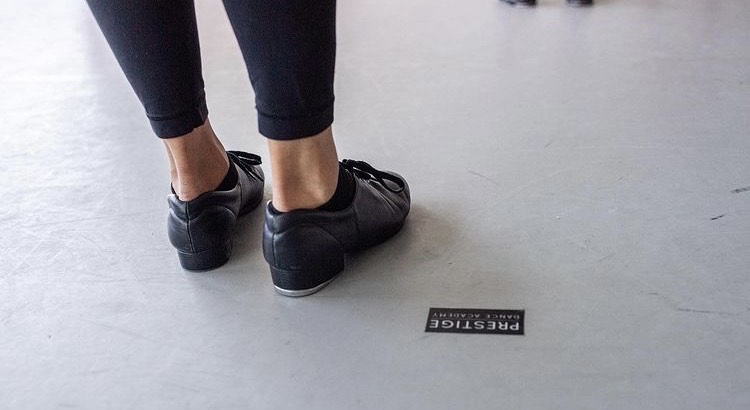Did you know that tap dancing is a blend of different dance styles from Irish, British, Scottish, and African roots? Over the decades, styles of tap dancing evolved to create today’s fun, energetic, and rhythmic tap dance classes. Today, we are highlighting tap and some of the most interesting facts about this style of dance!
1. Many famous boxers take tap dance training to improve their balance and coordination
When you take a tap dance class at Prestige, one of the first and most important things you’ll learn is how to balance yourself on the balls of your feet. Tap dance training involves keeping your knees relaxed, keeping your weight on the balls of your feet, and practicing how to walk by putting the ball of your foot down first and then the heel.
These techniques combined with other movements help improves balance, coordination, timing, and teach you to keep up with the rhythm of your entire body. This is exactly why many athletes, especially famous boxers, take up tap dance classes to develop their skills. These skills are not only useful for athletes but musicians as well, especially drummers.
2. National Tap Day is celebrated on May 25th
This day is also the birthday of Bill “Bojangles” Robinson, known as the father of tap dancing. He’s best known for his dancing roles with Shirley Temple in the 1930s in Broadway and Hollywood. Many tap dance enthusiasts credit him for re-igniting the dance style during the 20th century and for what it is today.
Other famous American tap dancers that you may know of are Fred Astaire and Ginger Rogers, both known to revolutionize tap dancing in movies. Although Fred’s talent is recognized for his style, peppy numbers, and charming stage presence, many argue that Ginger was the more talented one as she did all the same moves but in heels. Imagine the strength and endurance it takes to tap dance in a pair of heeled shoes!
3. The dancer is the musician and the shoes are the instrument!
Tap shoes have metal taps on the bottom of the shoe to create rhythmic percussion. These metal taps have screws that can be adjusted to create different sounds. The tone depends on the weight and surface shape of the metal tap. Early tap shoes were made with wood soles and had coins or nails hammered into the toe and heel.
In our tap dance classes, you will learn how to create rhythm with your feet. Tap dancers who perform to live music use “time steps” to let the musician know what speed and rhythm they wanted. Tap dancing is a language that communicates the relationship between movement and rhythm!

